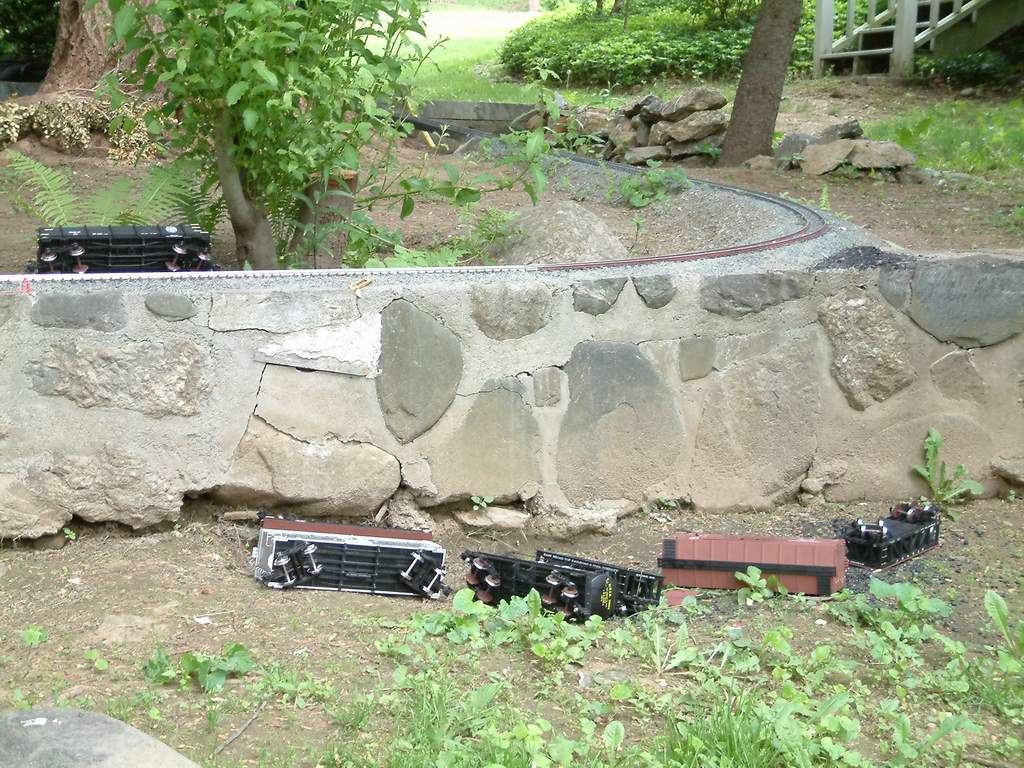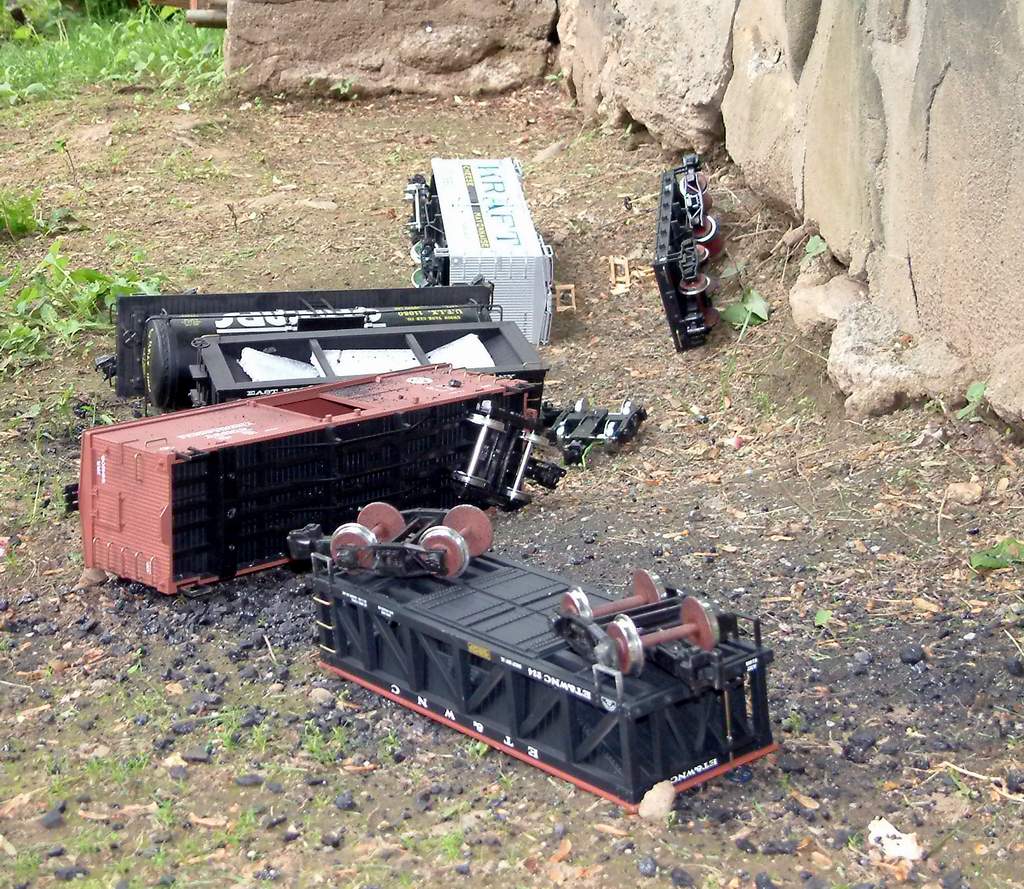Daktah John said:
Now that I’ve had my new C-19 for a few days I must agree with every opinion presented here. It is a beautifully detailed locomotive that runs like a Swiss watch. Once I had a grasp of the electronics, a non plug-n-play sound and R/C installation was simple leaving all of the stock electronics in place. I ran her on my outdoor track that has had no spring maintenance done. Not a single derailment on much less than perfect track. I am a happy camper!
First trials handling a road train were run today. I started out with a train longer than I ever run to see how she would handle the grades. No problem getting 8 cars up the straight 3.5-4% climb to Wall…
Not only do I need to get it lettered, I need to build a travel carrier. No way I want to disconnect those tender plugs any more than needed for maintenance. And speaking of the tender connection, how the heck do you get the pin into the close couple hole on the draw bar? The draw bar slams into the brake hanger when trying to do so. I didn’t spend much time with it, but a quick attempt to get the draw bar to slide over the top of the brake hanger didn’t fly.
Glad you like it. A couple more hints.
The C-19 was designed to go around 5 ft diameter (R2) curves. In order to accomplish this design goal the two blind center drivers are raised by a spacer so that they just touch the rail. These drivers are fully sprung. By removing these spacers you can get all 4 drivers to put full pressure on the rails and a little more pulling power. To remove the spacers just remove the bottom plate and grind them off. Once removed the locomotive is restricted to 8 ft diameter (R3) track.
Connecting the close coupled connection is a pain. You can shorten the drawbar by cutting off the long hole which makes it easy. I rise the tender and lower the front of the front truck a little to get the drawbar in place.
Hope that helps.
Stan


